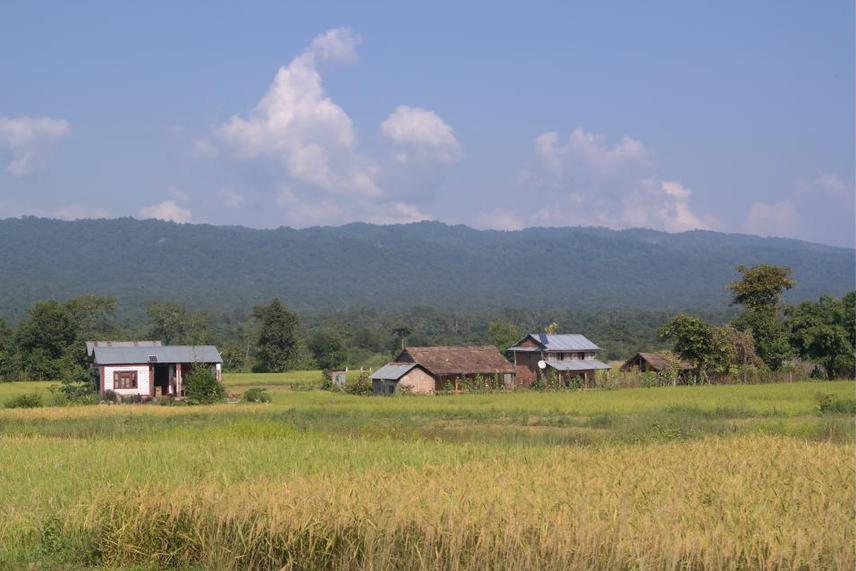Thakur Silwal
Wildlife attacks on humans are prominent challenges to the communities and park authorities around protected areas. The main aim of this project is to understand social and physical factors of attacks, victims' livelihoods and awareness programs for co-existence between globally threatened flagship species and local communities in Chitwan National Park (CNP), Nepal.

Siwalik hill of Chitwan National Park and local livelihoods of Madi valley, Chitwan.
Human-wildlife encounters are among the major hindering factor for maintaining harmonious relationships with local communities. Endangered species like elephant, tiger, rhino frequently attack humans around the protected areas. With a conciliatory approach in mind, various legal provisions have been developed and 30-50% parks' revenue given to the communities to mitigate negative impacts among local people. However, the studies report that bufferzone program has been acknowledged for its success in community development works rather than reducing wildlife damages. Annually, 30-35 human casualties occur and 12-15 persons lose their lives in CNP. As a result, the livelihoods of local communities are becoming more vulnerable. If the situations continue, it will intensify vulnerability to communities living around parks and poses serious threat to endangered species. Thus, this is a serious concern and needs immediate management intervention on factors of attack for securing well being of both human and wildlife.
It is realized that continuous encounters between wildlife and people is one of the big challenge for management authorities and communities. The studies focused mostly on intensity of conflicts. However, causes of associated factors for making vulnerable to series of attacks and livelihood strategies of victims are still unclear. In this context, proposed project focuses to investigate responsible social and physical factors of encounters. The project will assess the spatial and temporal distribution of human casualties by animals, identify major causes of encounters in this landscape and help to understand local people's perception, victims' alternative livelihood strategies, effectiveness of mitigation measures and relief schemes. Findings of empirically-based study will provide information to develop both short-term and long-term strategies that are needed for management intervention to minimize casualties and maximize harmonious environment. Moreover, the project will help to raise public awareness for reducing casualties and participation in conservation through stakeholders' workshop, group interaction meetings at highly affected pockets. In addition, findings related to policy and implementation practices will be shared with central and field level park managers. Thus, it is expected to contribute for long-term conservation by reducing wildlife encounters. Finally, the findings of CNP could be similar but not limiting for replication in other parks on how to minimize hostile interaction.